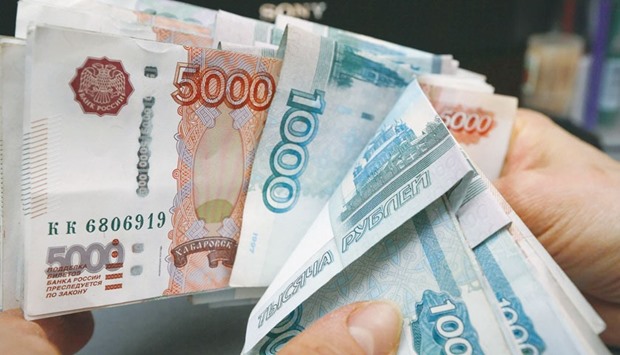Gross domestic product slumped 0.3% in November on a seasonally adjusted basis after gains of 0.1% in October and 0.3% in September, the Economy Ministry said in a report on its website. GDP shrank 4% last month from a year earlier.
A renewed sell-off in oil is threatening to extend the recession into a second year for what would be Russia’s longest slump in two decades. While GDP contracted at a slower annual pace last quarter, shrinking crude prices remain a challenge to President Vladimir Putin, who said last month that Russia had put the worst of the economic crisis behind it.
“The risk of a deeper decline has intensified,” Andrei Klepach, chief economist at Russian state development lender Vnesheconombank and a former deputy economy minister, said in a report. The resumption of a rout in oil this month and worsening tensions in geopolitics will contribute to “a stable negative trend, forcing downgrades in forecasts for this year.”
Brent crude, used to price Russia’s main export blend Urals, is poised to end 2015 with the lowest annual average price in 11 years after the Organisation of Petroleum Exporting Countries effectively abandoned output limits earlier this month. That’s hurting Russia by eroding budget revenue, crippling the rouble and stoking inflation.
Russian stocks are on track for their first monthly loss since September as the outlook dims for the economy. The rouble is the world’s third-worst performer in December with an 8% loss against the dollar.
The Economy Ministry estimates GDP will increase 0.7% this year after a contraction projected at 3.9% in 2015. The central bank is less upbeat, seeing a decline of as much as 1% in 2016 if Urals averages $50 a barrel. Brent lost 1.9% to $37.17 a barrel on the London-based ICE Futures Europe exchange. “If the oil price remains at the current level for half a year or a year, then we’ll see the economic decline extended,” former Finance Minister Alexey Kudrin said in an interview with Interfax news service.
Meanwhile the Market Vectors Russia ETF has gone from being the best- performer among almost 800 US exchange-traded funds in October to trailing 94 of them as crude plunged to a seven-year low. And with no end to the oil slump in sight, investors are bracing for even further losses in the energy-heavy fund.
Russia, the world’s largest energy exporter, is beset by its first recession since 2009 as international sanctions tied to the Ukraine conflict worsens the impact of the plunge in crude. Central bank policy makers this month lowered the threshold for what they consider a “risk scenario” for the economy to $35 a barrel. Prices at that level would cause a decline of as much as 3% in gross domestic product next year, they estimate.
“Russia’s stress scenario is already in play as Brent is nearing $35 a barrel and more stress is probably coming to the Russian economy,” Tomasz Noetzel, an analyst at Bloomberg Intelligence, said by phone from London last week. “The speculation that the worst for Russia is over is a little premature.”
The Market Vectors ETF, more than 40% of which is invested in energy companies, traded at this year’s high of $20.83 in May as Brent crude sold for more than $65 a barrel. Traders pulled $26mn from it in November, the first net outflow in two months, as oil prices slid below $45. With few catalysts to drive oil prices higher as the US raises interest rates and growth slows in China, foreign investors have little incentive to be exposed to Russian energy companies, said Oleg Popov, a money manager at the Moscow-based April Capital.
“For foreign investors, the Russian market is mainly about oil and gas,” Popov, who oversees about $500mn, said by phone last week. “As oil is declining and there are no signs of a rebound to be seen, investors are heading for the exits.”
While some companies in the Market Vectors Russia ETF have soared in the past two months - search engine Yandex NV has gained 13% - shares of energy producers from Tatneft PJSC to Gazprom have plunged at least 19%. Short interest in the ETF rose to 5.9% of outstanding shares in December after dropping to a five-month low of 3% the prior week, data compiled by Bloomberg and Markit show.
The $35 oil price in the central bank’s worst-case economic scenario model compares with $40 in its March forecast and $60 a year ago.
For Ivan Manaenko, the head of research at Veles Capital in Moscow, things in Russia can’t get much worse. Investors could find good values in the country if they’re patient and willing to wait for returns, he said.
“The majority of negative scenarios have materialized, and now might be not a bad time to buy Russian assets,” Manaenko said by phone last week. “Geopolitical factors remain highly unpredictable, but assuming things stay where they are, we are to see an improvement next year, though it will likely be rather slow.”



